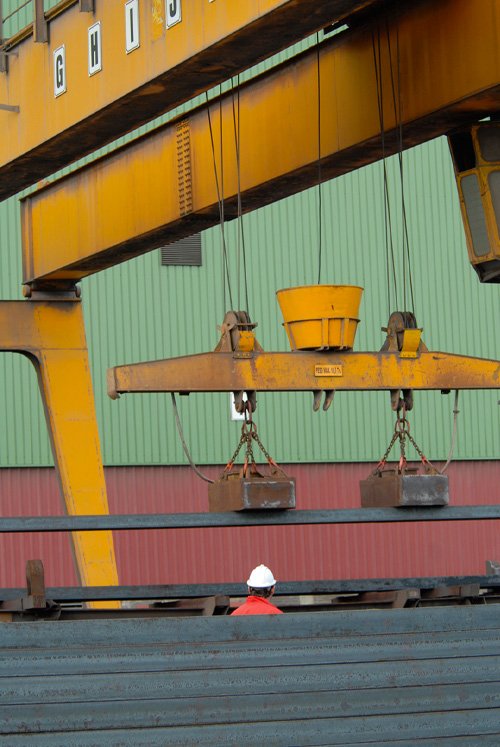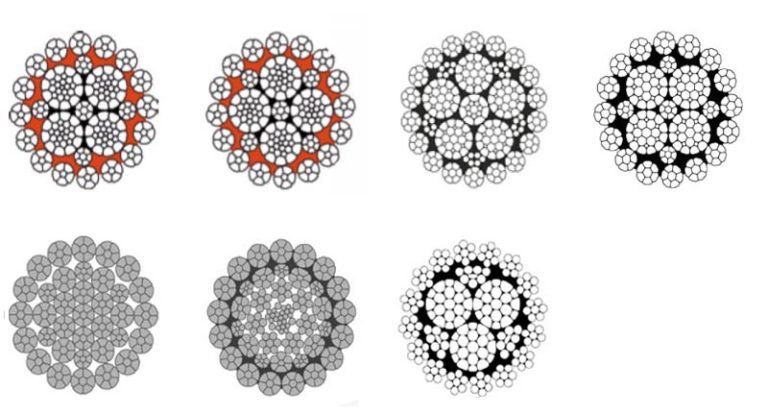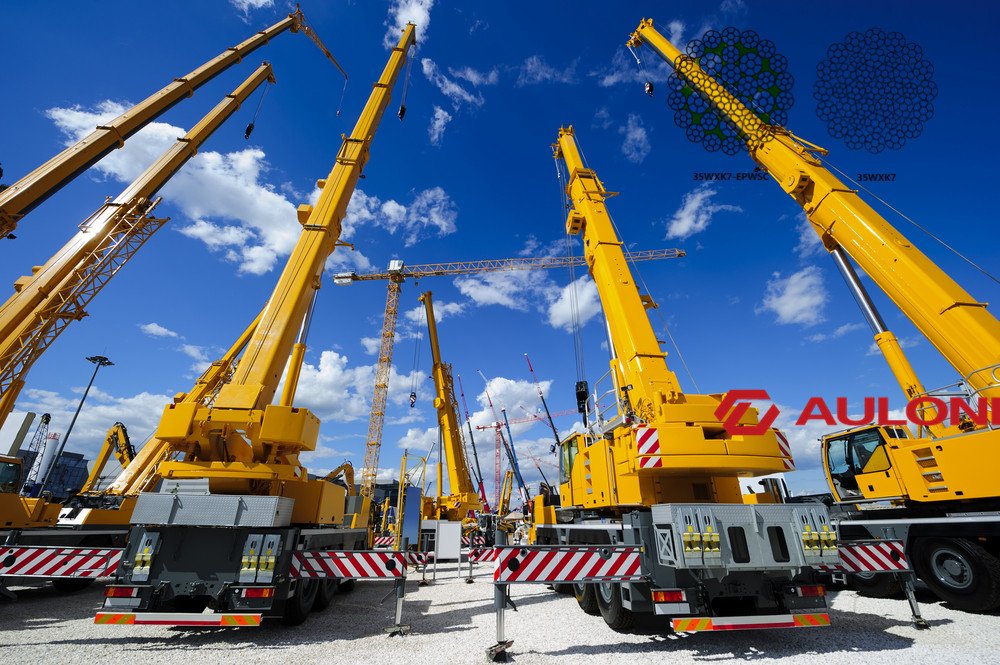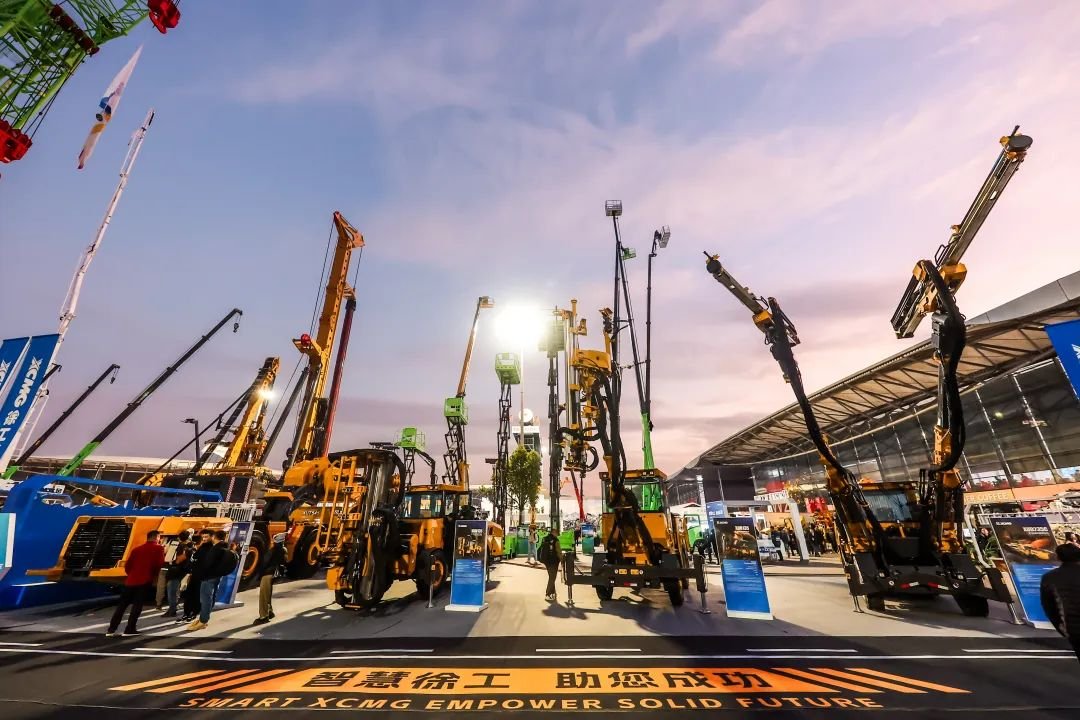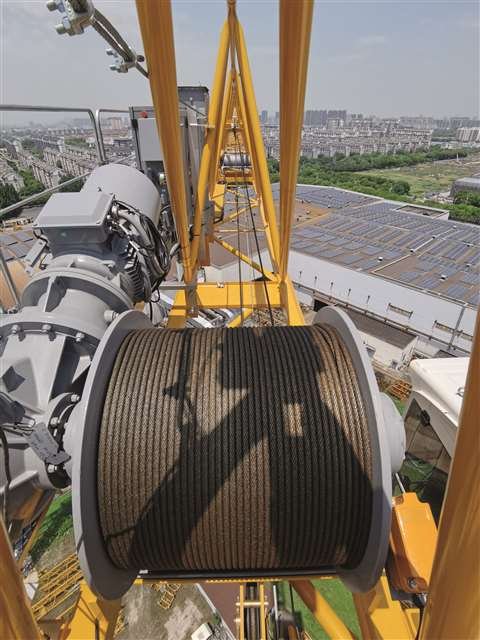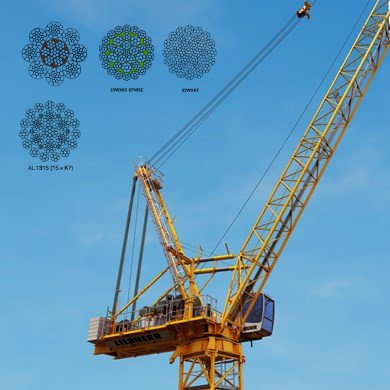A snapped tow line at sea is a captain’s worst nightmare. It leads to vessel damage, costly delays, and serious safety risks. Choosing the right rope from the start prevents this.
To choose the right towing wire rope, you must consider the vessel’s bollard pull, the rope’s Minimum Breaking Load (MBL), material, construction, and required certifications. These factors ensure safety and efficiency during all towing operations.
I remember an urgent call from a client in Indonesia. His team almost lost a valuable barge because their old tow rope snapped in choppy seas. The rope was simply not rated for the job. That experience taught me that a simple checklist can save millions. Let me share what you need to look for.
What Key Specifications Should You Check Before Buying?
Picking a rope isn’t just about its thickness. The technical details are where safety is truly built. We need to look at the numbers that matter most for your operation.
You must check the Minimum Breaking Load (MBL), rope diameter, length, and compliance with standards like EN12385. Always ensure the MBL is much higher than your vessel’s maximum bollard pull to have a good safety factor.
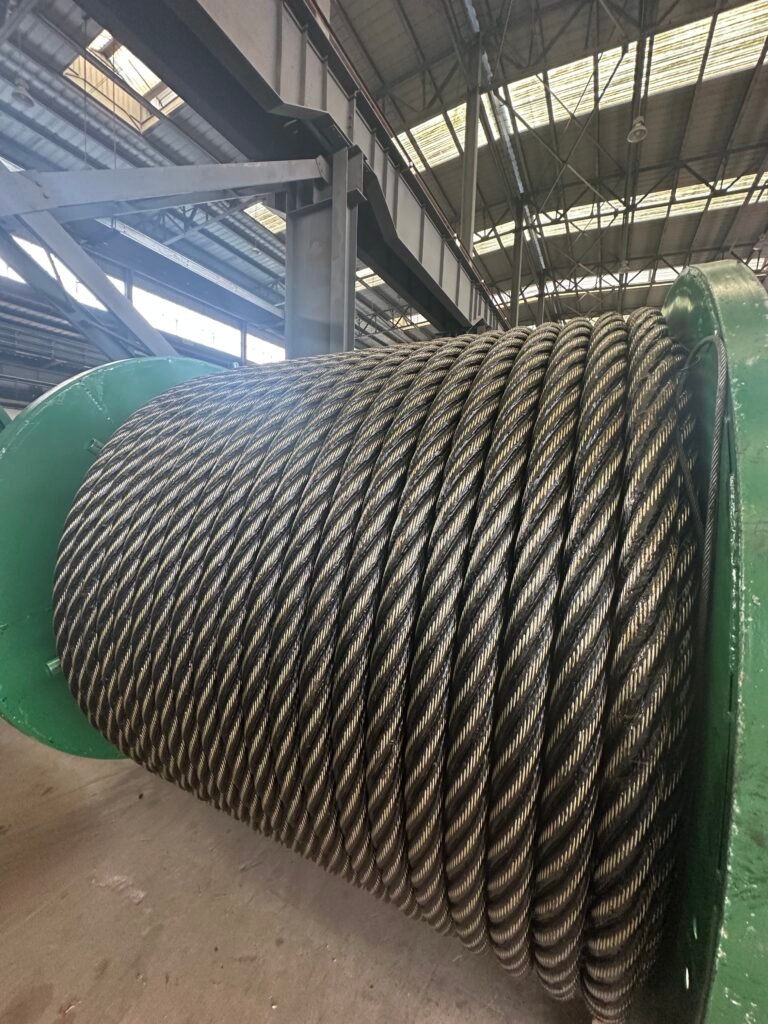
Understanding Minimum Breaking Load (MBL)
The MBL is the most critical number on a rope’s spec sheet. It is the force at which a new rope is expected to break. But you should never operate close to this limit. Instead, we use a Safety Factor (SF). The SF is a ratio that tells you how much stronger the rope is than the load it will carry. For example, if your a tug has a bollard pull of 50 tons and you use a rope with an MBL of 250 tons, your safety factor is 5:1. This buffer is essential. It accounts for shock loads, wear, and unexpected conditions.
| Towing Operation | Recommended Safety Factor (SF) |
|---|---|
| Harbor Towing | 3:1 to 4:1 |
| Coastal Towing | 4:1 to 5:1 |
| Open Sea Towing | 5:1 to 7:1 |
| Emergency Towing | 7:1 or higher |
Decoding Wire Rope Diameter and Length
The diameter of the wire rope directly impacts its strength. A larger diameter generally means a higher MBL. However, using a rope that is too thick can be a problem. It becomes heavy and difficult for the crew to handle. It also may not fit properly on the winch drum. So, you must find a balance between strength and usability.
Determining the right length is also important. For harbor towing, you might only need a shorter length. For long-distance ocean towing, you need a much longer rope. The extra length helps absorb shock from waves and gives you more room to maneuver. Always consider your most common towing scenarios when specifying the length.
The Importance of International Standards
When I see a rope is compliant with EN12385-4, I know it meets a high-quality benchmark. This European standard sets requirements for the design, manufacture, and testing of steel wire ropes. It is a promise from the manufacturer. It means the rope has passed specific tests for strength, endurance, and material quality. Buying ropes that meet international standards protects your investment. It also protects your crew and your vessels. It removes the guesswork from quality assessment.
How Does Material and Construction Affect Performance and Lifespan?
Two ropes can look identical but behave very differently at sea. The secret is inside the rope. What the steel is made of and how it is woven together determines its real-world performance. This is crucial knowledge for any buyer.
Steel grade, like EIPS, determines tensile strength. The rope’s construction, such as 6×36, affects its flexibility and wear resistance. A feature like a plastic-impregnated core can greatly extend a rope’s life by stopping internal friction and corrosion.

Galvanized vs. Bright Wire
Marine environments are harsh. Saltwater attacks steel and causes rust. That is why most marine ropes are galvanized. Galvanization is a process where a protective zinc coating is applied to the steel wire. This coating sacrifices itself to protect the steel underneath from corrosion. A “bright” or uncoated rope will rust very quickly at sea. For any towing operation near or on salt water, galvanized rope is the only smart choice.
| Feature | Galvanized Wire Rope | Bright Wire Rope |
|---|---|---|
| Corrosion Resistance | Excellent | Poor |
| Appearance | Dull, matte gray | Shiny, metallic |
| Initial Cost | Slightly higher | Lower |
| Service Life at Sea | Long | Very short |
| Primary Use | Marine, outdoor, corrosive environments | Indoor lifting, non-corrosive use |
Common Wire Rope Constructions for Towing
A wire rope is made of strands, and each strand is made of wires. The way these are arranged is called the construction. For example, a 6x36 rope has 6 strands, and each strand has around 36 wires.
A construction like 6x19 has fewer, larger wires in each strand. This makes it very resistant to abrasion and crushing. It is good for jobs where the rope rubs against surfaces.
A construction like 6x36 has more, smaller wires. This makes the rope much more flexible. It is better for bending around winch drums and sheaves. For general towing, the 6x36 class is often preferred because it offers a good balance of flexibility and abrasion resistance.
| Construction | Main Characteristic | Best Application for Towing |
|---|---|---|
6x19 Class | Abrasion Resistant | Good for use on rough surfaces or with smaller drums. |
6x36 Class | Flexible | Excellent for general purpose towing, good fatigue life. |
6x61 Class | Very Flexible | Best for applications requiring extreme flexibility. |
The Role of the Core: FC vs. IWRC
The center of a wire rope is its core. The core supports the outer strands. There are two main types. A Fiber Core (FC) is made of natural or synthetic fibers. It is more flexible but can be crushed under high loads.
An Independent Wire Rope Core (IWRC) is a small wire rope in its own right. An IWRC makes the main rope much stronger and more crush-resistant. For towing applications where ropes are spooled under high tension on a winch, an IWRC is almost always the better choice. It provides a solid foundation for the outer strands and resists deformation.
A Special Note on Plastic Impregnation
One of the best modern advancements is plastic impregnation. In this process, the space between the steel strands is filled with a special plastic. This does two amazing things. First, it locks in the factory lubricant for the entire life of the rope. Second, it creates a barrier that prevents saltwater, sand, and grit from getting inside the rope. Internal abrasion and corrosion are the hidden killers of wire rope. By stopping them, a plastic-impregnated rope can last much longer than a standard rope, especially in tough marine conditions. We offer this on many of our high-performance towing ropes.
Why Are Certifications Like DNV or ABS Crucial for Towing Ropes?
Some purchasing managers see certifications as just extra paperwork and cost. I see them as proof of safety and a guarantee of quality. They are not optional for serious marine operations. They are a necessity.
Certifications from third-party bodies like DNV or ABS verify that a wire rope has been made and tested to strict, independent standards. Maritime law, insurance companies, and specific ports often require them for operation.

What is a Third-Party Certification?
A third-party certification is an independent review of your rope. It is performed by a classification society. These are organizations like ABS (American Bureau of Shipping), DNV (Det Norske Veritas), Lloyd’s Register, or RMRS (Russian Maritime Register of Shipping). They are not connected to my factory or your company. Their only job is to confirm that a product meets established safety and quality rules. This unbiased verification is trusted across the entire maritime industry. When a rope has a DNV certificate, everyone involved knows it is fit for purpose.
The Certification Process: What It Entails
Getting a rope certified is a rigorous process. It is not just a simple test at the end. An inspector from the classification society may be involved at every stage.
- Material Verification: They check mill certificates for the raw steel to ensure it meets the required grade.
- Process Witnessing: The inspector may watch the wire being drawn and the strands being closed into a rope. This ensures manufacturing procedures are followed correctly.
- Destructive Testing: A sample from the finished rope is taken and pulled to destruction in a special machine. The inspector witnesses this test to verify the rope’s actual breaking load meets or exceeds the requirements.
- Final Documentation: If everything passes, the inspector issues a certificate that is specific to that exact rope or production batch. This document provides traceability.
This thorough process is why a certified rope provides such peace of mind.
Consequences of Using Non-Certified Ropes
Trying to save a little money by using a non-certified rope can be a very expensive mistake. The risks are significant. Your vessel could be denied entry into certain ports. In the event of an accident, your insurance company could refuse to cover the damages. A Port State Control inspection could detain your vessel, leading to huge daily costs. And most importantly, you are putting your vessel, your cargo, and your crew at risk of catastrophic failure. The small extra cost for a certified rope is a very small price to pay for safety and compliance.
| Risk Category | Consequence of Using Non-Certified Rope |
|---|---|
| Legal & Regulatory | Fines, Port State Control detention, denial of entry. |
| Insurance | Denial of claims after an incident. |
| Operational | Refusal by clients or partners to use the vessel. |
| Safety | Catastrophic rope failure, damage to assets, injury, loss of life. |
What Are the Best Practices for Maintaining Your Towing Wire Rope?
Buying a high-quality, certified rope is the first step. The second, equally important step, is taking care of it. Proper maintenance can easily double a rope’s service life. It also prevents most unexpected failures.
The best practices for maintenance include regular visual inspections for damage like broken wires or corrosion, proper lubrication to reduce friction, and correct storage away from moisture. You must always follow a strict inspection and retirement schedule.
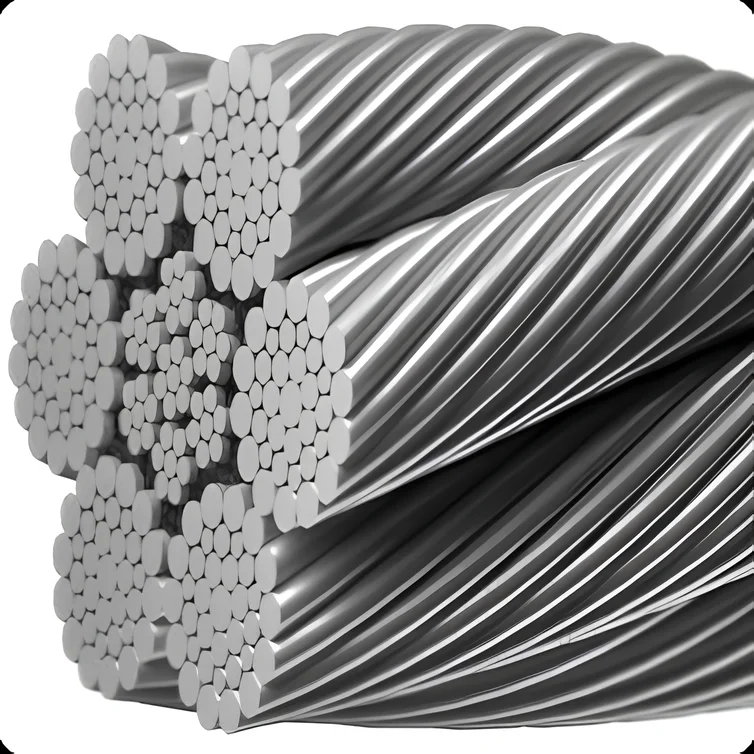
Your Daily Inspection Checklist
Before and after every use, someone should walk the length of the rope. This simple habit can catch problems early. It does not have to be a detailed inspection, just a quick visual check for obvious damage. A more thorough, documented inspection should be done on a regular schedule, perhaps weekly or monthly depending on use.
| Inspection Point | What to Look For |
|---|---|
| Broken Wires | Check for wires that are snapped. Note the number and location. |
| Corrosion | Look for any signs of rust, especially internal corrosion. |
| Kinks | Permanent loops or bends caused by pulling on a slack loop. |
| Crushing or Flattening | Sections of the rope that are no longer round. |
| Lubrication | Is the rope dry? Does it have a sufficient film of lubricant? |
| End Fittings | Check splices or sockets for any signs of wear, cracks or slippage. |
Lubrication: The Lifeblood of Your Rope
A wire rope is a machine with many moving parts. As the rope bends and stretches, its internal wires and strands rub against each other. Lubricant reduces this internal friction. It also provides a barrier against corrosion. A dry rope will wear out from the inside very quickly. You should use a penetrating lubricant that can get to the core of the rope. Apply it regularly, especially after the rope has been exposed to saltwater.
Proper Storage and Handling
How you store your rope is very important. It should be kept on a proper reel or winch drum. Never leave a rope lying on the deck or on the ground where it can collect moisture and dirt. If you must store it off the vessel, keep it in a dry, well-ventilated warehouse. When handling the rope, avoid shock loading. Shock loading is when a sudden, heavy force is applied to the rope. This can damage it instantly. Always apply loads smoothly and gradually. Also, avoid dragging the rope over sharp edges or rough surfaces.
When to Retire a Rope
Every rope has a limited service life. Using a rope until it breaks is extremely dangerous. You must have clear rules for when to take a rope out of service. These rules are called retirement criteria. They are based on standards developed from decades of experience and testing. A rope must be retired if any of the following conditions are met.
| Retirement Criterion | Guideline (Example based on common standards) |
|---|---|
| Broken Wires | More than a certain number of broken wires in one rope lay length. |
| Diameter Reduction | A decrease in diameter of more than 7-10% from the original. |
| Corrosion | Heavy internal or external rust that causes pitting and stiffness. |
| Kinking or Crushing | Any visible distortion that permanently damages the rope structure. |
| Heat Damage | Discoloration or other evidence of exposure to extreme heat. |
Conclusion
Choosing the right towing rope means checking specs, materials, and certifications. Proper maintenance and knowing your options ensure safe and efficient operations for your vessel.

